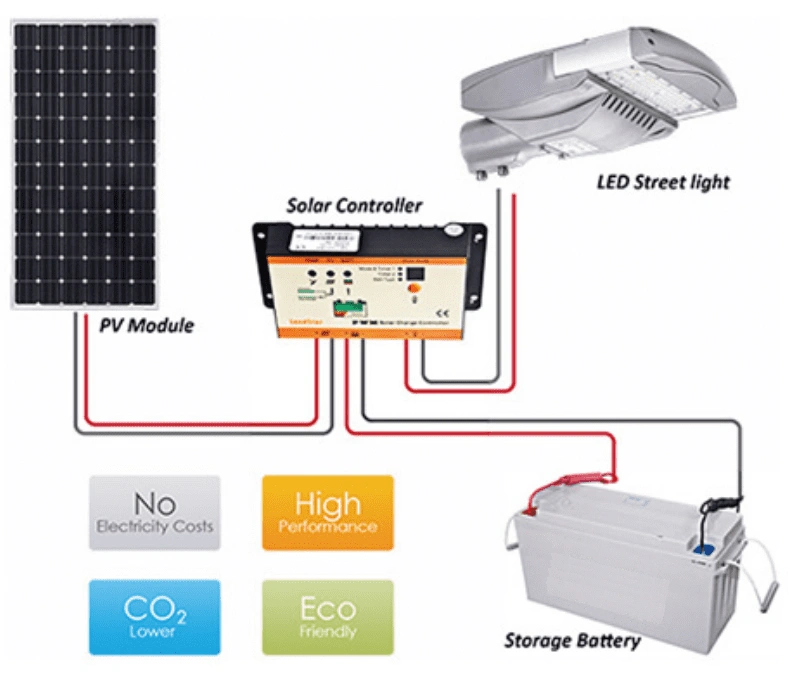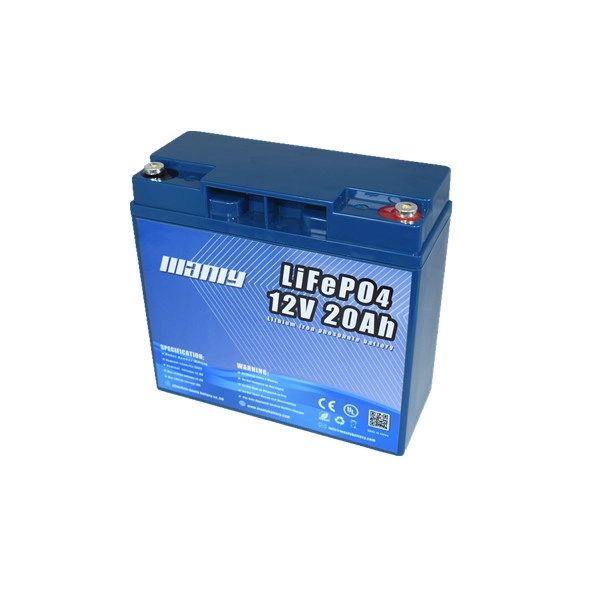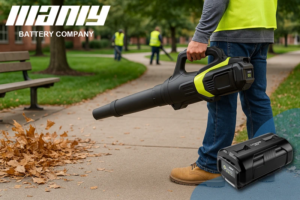Top Solar Street Light Battery Choices in 2023
Table of Contents
- Top Solar Street Light Battery Choices in 2023
- Why Is The Right Type of Solar Street Light Battery So Important?
- How Energy Storage Batteries Power the Future: An Insight into Solar Street Light Battery Systems
- Choosing the Optimal Battery Type for Solar Street Lighting
- How Can I Calculate How Much Capacity and Size I Need?
- What is the Ideal Type of Solar Street Light Battery?
- Final Thoughts
- Learn More About Battery
Why Is The Right Type of Solar Street Light Battery So Important?
Before we go any further, we must first clarify why choosing the right type of solar street light battery is so important.Of course, there are several different factors at play here. Most notably is efficiency and reliability. Indeed, especially during the winter months, there’s only so much sunlight available to charge up the battery and store power, and with higher energy demands during the winter nights, the importance of having a battery that can live up to the job is integral.In line with this, it’s clear that choosing the right solar street light battery can significantly impact the performance of the light.
How Energy Storage Batteries Power the Future: An Insight into Solar Street Light Battery Systems
Energy Storage Batteries primarily refer to batteries used for solar power systems, wind turbines, and other renewable energy storage purposes. One application of such a system is the Solar street light, which needs an Energy storage battery or, more specifically, a Solar street light battery, to store solar energy and provide it to the equipment. The performance of these batteries directly affects the storage capacity, safety, and longevity of power systems. So, what types of Energy storage batteries are out there, and what are their pros and cons? Let’s dive in.Energy storage can be categorized into mechanical storage and chemical storage. Electrochemical storage involves secondary batteries, where chemical elements serve as the storage medium. During the charge and discharge processes, these elements undergo chemical reactions or changes. Some key types include lead-acid batteries, flow batteries, sodium-sulfur batteries, and lithium-ion batteries.Lithium-Ion Batteries
- These batteries utilize lithium metal or lithium alloys as the anode material. Due to lithium’s reactive nature, handling and storing it requires specific conditions. With advancements in technology, they have become mainstream for applications including as a Solar street light battery.
- Pros: Long lifespan, high energy density, lightweight, adaptable.
- Cons: Safety concerns, can be explosive, high cost, usage restrictions.
Ternary Lithium Batteries
- These batteries use a ternary cathode material composed of lithium nickel cobalt manganese oxide. The ratio of nickel, cobalt, and manganese can be adjusted. Compared to cobalt lithium batteries, these are safer but have a lower voltage.
- Pros: High energy density, compact size.
- Cons: Poor thermal stability, risk of catching fire, rapid capacity decay, shorter lifespan.
Lead Acid Batteries
- A battery where electrodes are primarily made from lead and its oxide, and the electrolyte is a sulfuric acid solution.
- Pros: Safe and sealed, venting system, low maintenance, long lifespan, stable and reliable.
- Cons: Environmental concerns due to lead, low energy density, bulky.
Lithium Iron Phosphate (LiFePO4) Batteries
- These batteries use lithium iron phosphate as the cathode material. Different materials, including cobalt lithium and manganese lithium, are used for the positive electrode in lithium-ion batteries.
- Pros: Excellent charge and discharge, no memory effect, long life, good high-temperature performance, safe, eco-friendly.
- Cons: Lower energy density, bulky for its capacity, reduced low-temperature performance, higher production cost.
Sodium-Sulfur Batteries
- A secondary battery with sodium as the anode, sulfur as the cathode, and a ceramic tube as the electrolyte separator.
- Pros: High energy-to-weight ratio, no self-discharge, nearly 100% discharge efficiency, 10-15 year lifespan.
- Cons: Operates at high temperatures (around 350°C) to melt sulfur and sodium.
Flow Batteries
- Ideal for large-scale stationary storage, offering benefits like separate power and storage design, high efficiency, long lifespan, and deep discharge capabilities.
- Pros: Flexible design, long cycle life, rapid response, eco-friendly.
- Cons: Varies in energy density.
Lithium Manganese Oxide Batteries
- Uses manganese oxide as the cathode material, popular due to its low cost and safety.
- Pros: High energy density, low cost, safe, stable at low temperatures.
- Cons: Poor high-temperature performance, shorter lifespan.
Lithium Cobalt Oxide Batteries
- Known for its stability and high capacity ratio. Commonly found in laptops, phones, and other small electronics as well as in some Solar street light battery applications.
- Pros: High volumetric energy density, good stability, consistent performance.
- Cons: Safety concerns, very high cost, average cycle life, stability issues with materials.

Choosing the Optimal Battery Type for Solar Street Lighting
At this point, we’ve clarified that investing in the highest-quality solar street light battery is integral - but how can you choose the optimal battery type? There are countless different battery options on the market, such as a 12v LiFePO4 lithium battery, but choosing the one that’s right is not necessarily simple. Nonetheless, there are plenty of features and factors to consider that could help inform the decision.Storage Capacity
One of the most significant factors to consider when choosing solar street lighting is the storage capacity of the unit. Indeed, since solar panels only charge throughout the day, being able to store the power you’ve generated successfully is integral. As such, considering the storage capacity of your chosen battery could make a world of difference in terms of whether or not it’s the right option for your needs.Generally speaking, most street light batteries won’t need a particularly massive storage capacity because modern street lights are highly efficient. Thus, they don’t particularly use much energy, which in turn reduces the amount of storage you’ll need. Nevertheless, a smaller battery likely won’t be able to make the grade compared to other options.When choosing a battery based on energy storage, it’s worth considering the efficiency of your chosen street lights directly to help. Indeed, modern LED street lights are often considered around 40% more efficient (or better) than traditional alternatives; as such, the power consumption of your chosen bulb will directly impact the amount of storage you need.Don’t forget, though — the ideal solar street light battery should go one step further than just storing enough power. Instead, try to choose one with slightly more storage capacity than the light will need; this helps ensure that there’s always a backup power supply, even on days with less light to convert into energy.How Can I Calculate How Much Capacity and Size I Need?
If you need to calculate how much storage capacity you need precisely, the following calculation can help. Simply multiply the power (in Watts) by the number of hours and the days of autonomy. Then, divide this result by the efficiency multiplied by the voltage by the depth of discharge, and you’ll have an estimate of how much capacity is needed.As mentioned prior, though, you’ll want to give slightly more leeway if possible to allow back-up power storage. In addition, try to make sure that you consider the battery bank case in the street light to help; naturally, a smaller case will restrict the battery size you can use.To determine the necessary battery capacity, refer to the following formula: For illustration, consider a fixture producing 1,500 lumens, consuming about 15W, compared to a 12,000-lumen solar street lamp drawing 120W. To keep a 12V solar lamp lit consistently for 12 hours (from 19:00 to 07:00), factoring in 80% efficiency loss, a Depth of Discharge (DOD) of 50%, and 2 days of autonomy, the 1,500-lumen light would need a 75Ah@12V battery. Meanwhile, the brighter 12,000-lumen light would demand a robust 600Ah@12V battery bank.
For illustration, consider a fixture producing 1,500 lumens, consuming about 15W, compared to a 12,000-lumen solar street lamp drawing 120W. To keep a 12V solar lamp lit consistently for 12 hours (from 19:00 to 07:00), factoring in 80% efficiency loss, a Depth of Discharge (DOD) of 50%, and 2 days of autonomy, the 1,500-lumen light would need a 75Ah@12V battery. Meanwhile, the brighter 12,000-lumen light would demand a robust 600Ah@12V battery bank.Voltage
A relatively simple factor to consider when choosing an outdoor battery is voltage. In short: your chosen battery must be able to match the voltage requirements of the street light. Fortunately, street lights are often particularly energy efficient (especially given modern energy efficiency innovations), meaning that you won’t generally need a high voltage for the battery.Efficiency
Did you know that not all of the power that’s actually input into a battery will end up being discharged down the line? In many cases, people assume that batteries can output as much charge as is taken on, but this isn’t true; in fact, batteries can vary significantly in terms of their total efficiency.Generally speaking, most high-quality batteries will be able to provide a round-trip efficiency (the total charge and discharge cycle) of around 80%. The higher the efficiency, the more reliable your street light is likely to be.Temperature Range
For outdoor batteries, another feature you’ll need to keep in mind (something that’s easy to forget about, given all the other properties) is the temperature range. Indeed, unlike indoor batteries, where temperatures are likely to stay more consistent year-round, outdoor batteries will typically operate at a highly fluctuating temperature range, dropping to around freezing point in the winter months and above 30 degrees Celsius during the summer.Of course, your chosen battery needs to be able to cope with both of these temperature extremes (and do so reliably). Especially during the winter, when cold weather and dark nights are both common, having a battery that doesn’t significantly drop in performance in the cold is vital to keep the solar lights running all night long.The biggest challenge generally is extreme cold. This is because batteries tend to slow down in terms of taking and delivering electrical charge during the cold, limiting their efficacy and value for solar street lights. As such, try to look for a battery that can perform well at these extremes; insulation may further help minimise the battery’s exposure to the cold.Lifespan
When investing in a new battery, choosing one capable of running efficiently for a long period of time is crucial. Indeed, having to replace or repair a battery that’s running to the end of its life can be a frustrating experience, so choosing a battery with a longer expected lifespan (or life cycle) could help.It’s worth noting here that the way the battery is used will also impact its life cycle. For example, if a battery is running at a depth of discharge of 80%, it’ll likely have a much shorter life cycle than a batter with a 50% depth of discharge.When choosing a battery, always be sure to consider the provided warranty to get an idea of how long it will continue to operate. For example, if the battery only has a warranty of a few years, it might be advisable to steer clear or look for another alternative; after all, this suggests the manufacturer is only confident that the battery will operate normally for a short span of time.Cost
When choosing the optimal solar street light battery, price isn’t something you should immediately jump to - but it’s nevertheless helpful to consider to inform your final decision. Indeed, especially when installing numerous batteries, the cost can quickly add up. As a result, looking for a top-quality battery that can still deliver excellent value for money is hugely important.Here at MANLY Battery, we understand just how important value for money is. Thus, our teams are proud to deliver some of the highest-quality battery products tailored to your needs without charging the Earth. Our batteries are produced on an expansive and meticulous production line, which further helps cut the cost for buyers.




















